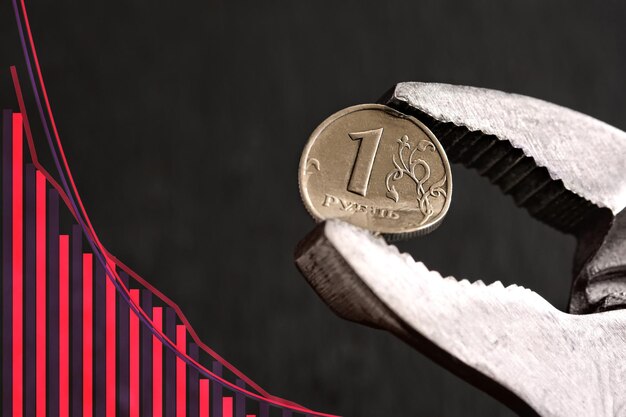How to Use Crypto Trading Indicators to Boost Your Investment Returns and Maximize Profits
When it comes to navigating the complex and ever-evolving landscape of digital asset trading, understanding and utilizing advanced indicators can be the key to unlocking optimal profitability.
In today’s fast-paced and highly competitive crypto market, traders are constantly seeking innovative ways to gain an edge and make informed decisions. To achieve success in this dynamic environment, it is crucial to go beyond traditional approaches and explore the realm of cutting-edge indicators that can provide valuable insights and guide strategic trades.
By incorporating advanced indicators into your trading strategy, you can harness the power of sophisticated analytics to identify emerging trends, gauge market sentiment, and recognize profitable entry and exit points. These indicators serve as powerful tools, enabling traders to make data-driven decisions with confidence and precision.
Moreover, these indicators offer a depth of analysis that goes beyond simple price movements, taking into account factors such as trading volume, market volatility, and historical patterns. This comprehensive approach allows traders to uncover hidden opportunities and make well-informed predictions, giving them a significant advantage in the highly volatile and unpredictable crypto market.
In the following sections, we will explore a selection of groundbreaking indicators that have revolutionized the crypto trading landscape. From oscillators and moving averages to volatility indices and volume-based indicators, we will delve into the intricacies of these tools and provide practical insights on how to effectively incorporate them into your trading strategy.
Understanding Moving Averages in the Cryptocurrency Market
In the fast-paced world of cryptocurrency trading, understanding and effectively utilizing various technical indicators is crucial for achieving success and maximizing profitability. One such indicator that holds great importance is moving averages.
The Basics of Moving Averages
Moving averages are statistical tools that help traders smooth out price data over a given period of time. They provide valuable insights into the trend direction, support and resistance levels, as well as potential buy or sell signals.
By calculating the average price of a cryptocurrency over a specified timeframe, moving averages help traders identify the overall market sentiment and make informed decisions. They act as a filter, eliminating temporary price fluctuations and providing a clearer picture of the underlying trend.
Types of Moving Averages
There are different types of moving averages, with the most commonly used ones being the Simple Moving Average (SMA) and the Exponential Moving Average (EMA). The SMA calculates the average price over a specified period of time, while the EMA places more weight on recent price data.
Traders often use a combination of different moving averages to gain a comprehensive understanding of the market. This can include the use of shorter-term moving averages to identify short-term trends and longer-term moving averages to identify broader market trends.
| Type of Moving Average | Calculation Method | Weighting |
|---|---|---|
| Simple Moving Average (SMA) | Add up closing prices over a specified period and divide by the number of periods | Equal weighting to all price data points |
| Exponential Moving Average (EMA) | Apply a formula that places more weight on recent price data | More weight on recent price data, less weight on older data points |
Traders use moving averages in various ways, such as identifying trend reversals, confirming support and resistance levels, and generating buy or sell signals. Additionally, moving averages can also be combined with other technical indicators to enhance trading strategies and improve overall profitability.
In conclusion, understanding moving averages is essential for crypto traders looking to achieve success in the ever-evolving cryptocurrency market. By incorporating these indicators into their trading strategies, traders can gain valuable insights, spot potential trading opportunities, and increase their chances of generating optimal profits.
How to Use Bollinger Bands to Predict Crypto Market Trends
In this section, we will explore the effective utilization of Bollinger Bands as a powerful tool for discerning potential trends in the cryptocurrency market. By employing this indicator, traders can gain insightful information about the price volatility, range, and potential reversals in crypto asset prices.
Bollinger Bands, developed by John Bollinger, are a popular technical analysis tool used in financial markets, including the cryptocurrency space. They consist of three lines – the middle band, upper band, and lower band – which are calculated based on a specified period’s moving average and standard deviation.
The middle band represents the simple moving average (SMA), providing traders with an indication of the prevailing trend. It serves as a reference point for assessing whether prices are trading above or below the overall trend.
The upper band and lower band are positioned at a certain number of standard deviations away from the middle band, typically two standard deviations. These bands dynamically adjust in response to market volatility. When prices move towards the upper band, it suggests that the market is overbought, while approaching the lower band indicates oversold conditions.
By monitoring the relationship between the price and the bands, traders can identify potential trend reversals and predict the onset of price movements. For instance, when prices touch or penetrate the upper band, a trend reversal or price decrease might be anticipated. Conversely, when prices touch or surpass the lower band, a trend reversal or price increase could be on the horizon.
It is important to note that Bollinger Bands are useful when considered in conjunction with other technical indicators and fundamental analysis. Traders should assess additional factors, such as volume, market sentiment, and upcoming events, to further validate potential trends.
Overall, the application of Bollinger Bands enables traders to gain insights into potential crypto market trends and make informed decisions about entry and exit points, risk management, and profit-taking strategies.
Unleashing the Power of Relative Strength Index (RSI) in Crypto Trading
The potential of the Relative Strength Index (RSI) to enhance profitability in the dynamic realm of cryptocurrency trading is fascinating. This article uncovers the hidden potential of RSI, offering insight into how it can be leveraged for successful trading strategies.
The RSI, a widely used technical indicator in financial trading, measures the strength and speed of price movements. In the context of cryptocurrencies, the RSI can be a valuable tool for identifying overbought and oversold conditions, which can signal potential market reversals or trends.
One of the benefits of incorporating RSI into your crypto trading strategy is its ability to provide early indications of potential price changes. By analyzing the RSI values of different cryptocurrencies, traders can identify emerging trends and spot opportunities for profitable trades.
When the RSI surpasses certain predetermined thresholds, it can indicate overbought or oversold conditions. Overbought conditions may suggest a potential decline in price, while oversold conditions may indicate a possible price increase. Understanding these signals and using them in conjunction with other technical analysis tools can greatly enhance trading decisions.
Moreover, the RSI can be combined with other indicators and analysis techniques to create robust trading strategies. By considering factors such as volume, trend lines, and support and resistance levels in conjunction with the RSI, traders can develop a comprehensive approach to crypto trading, increasing the likelihood of optimal profitability.
In conclusion, the Relative Strength Index (RSI) holds tremendous potential for enhancing profitability in crypto trading. Its ability to identify overbought and oversold conditions, along with its compatibility with other indicators, makes it a valuable tool in developing successful trading strategies. By harnessing the power of the RSI, traders can unlock new opportunities and maximize their potential to profit in the ever-evolving world of cryptocurrencies.
Harnessing the Potential of Fibonacci Retracement in Crypto Analysis
In the realm of digital currencies, an exploration of technical analysis tools is essential to uncovering profitable opportunities. One such tool that has gained significant traction among astute traders is the Fibonacci retracement.
Understanding Fibonacci Retracement
Fibonacci retracement, derived from the mathematical sequence introduced by Leonardo Fibonacci in the 13th century, has proven to be a valuable method for identifying potential price levels in cryptocurrency trading. This technique utilizes ratios to determine potential support and resistance levels within a given price trend.
By leveraging the Fibonacci retracement tool, traders can identify areas where price corrections are likely to occur after a significant price movement. This information allows traders to enter or exit positions at optimal times, maximizing their potential profits and mitigating risk.
Implementing Fibonacci Retracement in Crypto Analysis
To harness the potential of Fibonacci retracement in crypto analysis, traders should follow a systematic approach. This involves selecting a relevant price trend, applying the Fibonacci retracement tool, and interpreting the resulting levels to inform trading decisions.
First, traders need to identify a clear and well-established price trend within their chosen cryptocurrency. Whether it is an uptrend or downtrend, the presence of a robust trend is crucial for accurate Fibonacci retracement analysis.
Next, the Fibonacci retracement tool should be applied to the selected price trend. This tool consists of drawing horizontal lines at key Fibonacci ratios, typically 23.6%, 38.2%, 50%, 61.8%, and 78.6%. These levels provide potential support and resistance areas where price reversals may occur.
Finally, traders must interpret the resulting Fibonacci retracement levels to inform their trading decisions. When price retracements correspond with Fibonacci levels, it demonstrates a higher probability of reversal or consolidation. Traders can utilize this information to plan their entry or exit points, set stop-loss orders, and adjust their risk management strategies accordingly.
In conclusion, by harnessing the potential of Fibonacci retracement in crypto analysis, traders can gain a deeper understanding of market dynamics and make informed trading decisions. This technical analysis tool allows traders to identify potential price levels for optimal entry and exit points, ultimately enhancing their profitability in the highly volatile cryptocurrency market.
Exploring the Hidden Gems of Volume Analysis in Crypto Trading
In this section, we will delve into the often overlooked but highly valuable aspect of volume analysis in the realm of cryptocurrency trading. While many traders focus primarily on price movements and technical indicators, understanding the underlying volume patterns can provide unique insights into market trends and potential trading opportunities.
Unveiling the power of volume analysis
Volume refers to the amount of a specific cryptocurrency that is traded within a given period. By analyzing the volume data, traders can gain a deeper understanding of market dynamics, such as the intensity of buying and selling pressure and the level of market participation. This information can shed light on the strength or weakness of a price movement, validate trends, and identify potential reversals.
Discovering hidden patterns
Volume analysis involves studying the relationship between volume and price. By analyzing volume patterns, traders can identify key support and resistance levels, as well as potential breakouts or breakdowns. For example, a significant increase in volume during a price surge could indicate strong buying interest and further price appreciation. On the other hand, low volume during a price decline might suggest a lack of conviction and a potential reversal or consolidation.
Accumulation and distribution patterns
Volume analysis can also reveal accumulation and distribution patterns, which occur when smart money enters or exits a particular cryptocurrency. Accumulation phases are characterized by increasing volume and a consistent range-bound price movement, indicating that institutional investors or whales are accumulating positions. Conversely, distribution phases are marked by decreasing volume and a sideways or decreasing price action, signifying that smart money is distributing their holdings to retail traders.
Spotting market manipulation
Volume analysis can also help detect market manipulation attempts. Sudden spikes in volume without a corresponding price movement might indicate market manipulation, as someone is trying to create artificial buying or selling pressure. By being aware of these irregular volume patterns, traders can be cautious and avoid falling into potential traps set by manipulators.
Combining volume analysis with other indicators
While volume analysis provides valuable insights on its own, it is even more powerful when combined with other technical indicators. By using volume in conjunction with indicators such as moving averages, MACD, or RSI, traders can confirm or signal potential trend reversals, validate breakouts or breakdowns, and enhance their overall trading decision-making process.
Conclusion
Volume analysis is a hidden gem in the world of crypto trading that offers a wealth of information to attentive traders. By understanding the patterns and implications of volume fluctuations, traders can gain a competitive edge and make more informed trading decisions. Whether used independently or in combination with other indicators, volume analysis is a valuable tool for identifying optimal entry and exit points, as well as understanding market sentiment.
Mastering the Art of Ichimoku Clouds for Profitable Crypto Trading
Unlocking the full potential of Ichimoku Clouds can greatly enhance your success as a cryptocurrency trader. This powerful technical analysis tool is renowned for its ability to provide comprehensive market insights and predict price trends with remarkable accuracy. By understanding and applying the principles of Ichimoku Clouds, you can gain a competitive edge in the volatile world of crypto trading.
Comprehensive Market Insights
Ichimoku Clouds offer a holistic approach to analyzing cryptocurrency markets. With elements such as the Kumo (cloud), Tenkan-sen (conversion line), Kijun-sen (base line), and Chikou Span (lagging line), this versatile indicator provides a wealth of information about market trends, support and resistance levels, and potential entry and exit points.
Predictive Power
By mastering the art of interpreting Ichimoku Clouds, you can unlock their predictive power. The cloud, for example, acts as a dynamic support and resistance zone, helping traders identify trends, reversals, and potential breakouts. Additionally, the convergence and divergence of the conversion line and base line can offer valuable insights into market momentum and potential trend shifts.
It is important to note that while Ichimoku Clouds can provide powerful signals, they should not be used in isolation. Combining this indicator with other technical analysis tools and considering fundamental factors can further optimize your trading decisions.
With a thorough understanding of Ichimoku Clouds and their application in your trading strategy, you can navigate the cryptocurrency market with confidence and increase your profitability. Embrace the art of utilizing this versatile tool, and let its insights guide you towards achieving trading success.
Questions and answers: Crypto trading indicators
What are some advanced crypto trading indicators?
Some advanced crypto trading indicators include the moving average convergence divergence (MACD), relative strength index (RSI), Bollinger Bands, and Fibonacci retracement levels. These indicators help traders analyze market trends, identify potential price reversals, and make informed trading decisions.
How can using advanced crypto trading indicators improve profitability?
Using advanced crypto trading indicators can improve profitability by providing traders with valuable insights into market trends and potential price movements. These indicators help traders identify when to buy or sell cryptocurrencies, reducing the risk of making poor trading decisions and maximizing profit potential.
What is the moving average convergence divergence (MACD) indicator?
The moving average convergence divergence (MACD) indicator is a popular tool used in technical analysis to identify potential trend reversals and generate trading signals. It consists of two lines – the MACD line and the signal line – and a histogram that represents the difference between the two lines. Traders often use crossovers between these lines as buy or sell signals.
How can traders use Fibonacci retracement levels in crypto trading?
Traders can use Fibonacci retracement levels in crypto trading to identify potential support and resistance levels in a price trend. These levels are derived from the Fibonacci sequence and can help traders make decisions on when to enter or exit trades. By aligning Fibonacci retracement levels with other indicators, traders can increase their chances of making profitable trades.
What is a momentum indicator in crypto trading?
A momentum indicator in crypto trading is a tool that measures the rate of change in the price of an asset over a specified period, helping traders identify the strength or weakness of a trend.
What are considered some of the best indicators for crypto trading?
Some of the best indicators for crypto trading include moving averages, relative strength index (RSI), stochastic oscillator, and Bollinger Bands, among others, each offering unique insights into market conditions.
How does a trend indicator help traders in analyzing crypto market data?
A trend indicator helps traders analyze crypto market data by identifying the direction and strength of a price trend, allowing them to make informed decisions based on the prevailing market conditions.
What role do volume indicators play in crypto trading?
Volume indicators provide insights into the amount of trading activity in the market, helping traders assess the significance of price movements and confirm the validity of trends indicated by other technical indicators.
Why is market data essential for using indicators in crypto trading?
Market data, including price, volume, and other relevant metrics, serves as the basis for using indicators in crypto trading, enabling traders to analyze past performance and predict future price movements.
Why is the momentum indicator considered one of the most popular tools in technical analysis?
The momentum indicator is considered one of the most popular tools in technical analysis because it helps traders gauge the strength of price trends and identify potential reversal points, enhancing decision-making in trading.
How do traders use indicators to navigate different market conditions in crypto trading?
Traders use indicators to navigate different market conditions by adjusting their strategies based on the signals generated by various indicators, such as identifying trends, spotting overbought or oversold conditions, and confirming price reversals.
Can you explain how traders interpret the price of an asset using indicators?
Traders interpret the price of an asset using indicators by analyzing the relationship between the indicator’s readings and the price movements, looking for patterns or signals that indicate potential buy or sell opportunities.
What are some key considerations when selecting indicators for crypto trading?
When selecting indicators for crypto trading, traders should consider factors such as their trading style, preferred time frame, market volatility, and the specific assets they are trading to choose indicators that align with their strategies and goals.
How do traders effectively integrate indicators into their crypto trading strategies?
Traders effectively integrate indicators into their crypto trading strategies by combining multiple indicators to confirm signals, using them in conjunction with other analysis techniques, and adapting their strategies to changing market conditions to maximize profitability and minimize risk.
What is the significance of an indicator in crypto trading?
An indicator in crypto trading is a tool that helps traders analyze market data and make informed decisions based on price movements, trends, and other factors.
Can you describe the different types of indicators used in crypto trading?
Types of indicators used in crypto trading include trend indicators, momentum indicators, volatility indicators, volume indicators, and a combination of technical analysis tools.
How do traders benefit from using a combination of indicators in their analysis?
Traders benefit from using a combination of indicators as it provides a more comprehensive view of market conditions, increases the accuracy of trading signals, and reduces the likelihood of false signals.
What are some popular technical indicators for cryptocurrency trading?
Popular technical indicators for cryptocurrency trading include moving averages, Relative Strength Index (RSI), MACD (Moving Average Convergence Divergence), Bollinger Bands, and Fibonacci retracement levels.
How do volatility indicators help traders assess trading activity in the crypto market?
Volatility indicators help traders assess trading activity in the crypto market by measuring the degree of price fluctuations over a specific period, providing insights into market volatility and potential price movements.
Why do beginner crypto traders often use multiple indicators in their analysis?
Beginner crypto traders often use multiple indicators in their analysis to gain a more comprehensive understanding of market trends, confirm trading signals, and reduce the risk of making uninformed decisions.
How do trend indicators help traders identify market trends in cryptocurrency trading?
Trend indicators help traders identify market trends in cryptocurrency trading by analyzing price movements over time, indicating whether the market is trending upwards, downwards, or sideways.
What do momentum indicators measure in crypto trading?
Momentum indicators measure the speed and strength of price movements in crypto trading, helping traders identify overbought or oversold conditions and potential trend reversals.
How do volume indicators assist traders in analyzing the trading volume of a cryptocurrency?
Volume indicators measure the trading volume of a cryptocurrency, providing insights into the level of market activity and confirming the strength of price movements indicated by other technical indicators.
Why are lagging indicators, also known as fundamental analysis and market sentiment, essential in cryptocurrency trading?
Lagging indicators, such as fundamental analysis and market sentiment, are essential in cryptocurrency trading as they provide insights into broader market trends, investor sentiment, and the underlying fundamentals of a cryptocurrency, helping traders make informed decisions.








No responses yet